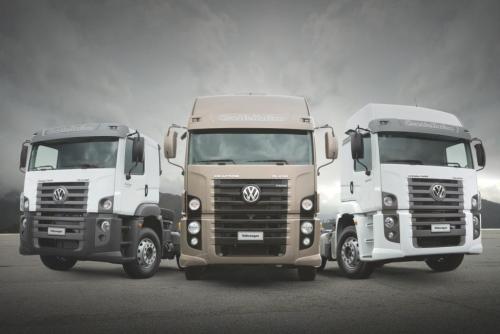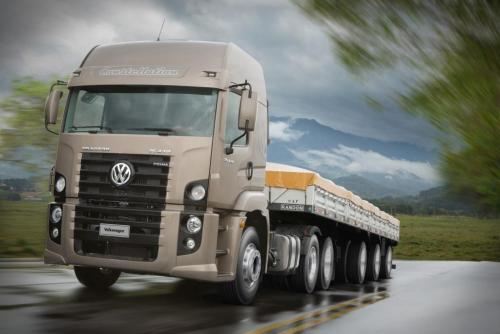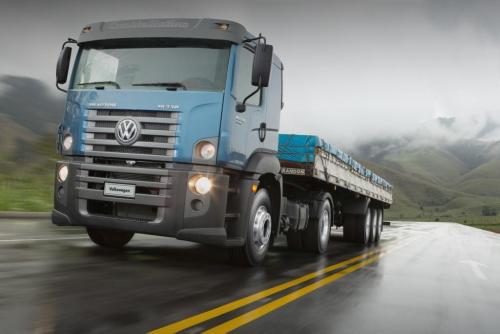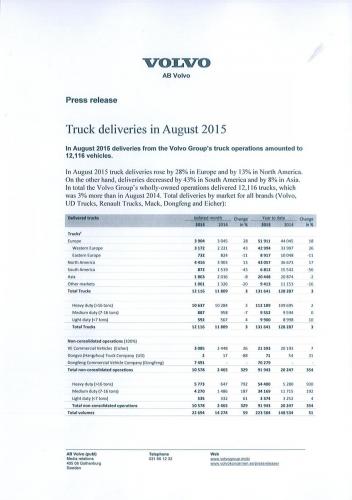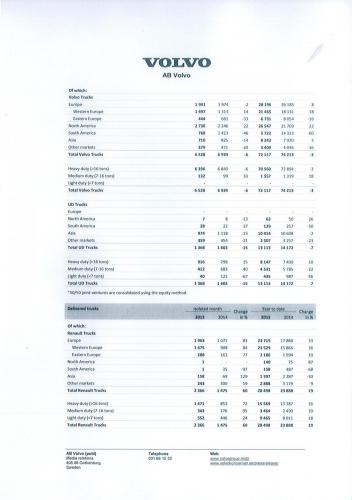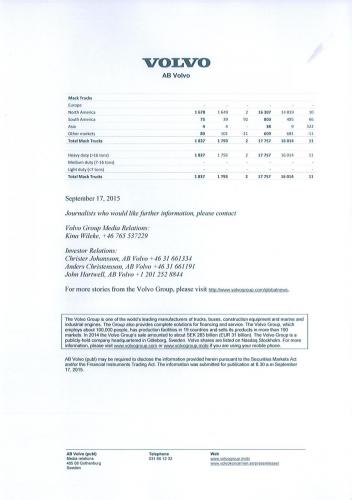
kscarbel2
Moderator-
Posts
18,868 -
Joined
-
Days Won
114
Content Type
Profiles
Forums
Gallery
Events
Blogs
BMT Wiki
Collections
Store
Everything posted by kscarbel2
-
I suspect the step sides are the most difficult to find, the long bed step side being the rarest, and the 4x4 short bed stepside being the looker. I'm partial to the 77 vintage grille (http://pictures.topspeed.com/IMG/crop/201208/dodge-ram-d-series-8_800x0w.jpg). Of course a good condition WM300 is the real treasure (http://image.fourwheeler.com/f/28369218+w600+cr1/129_0207_18_z%2Btop_10_classic_4x4%2Bbig_classic_truck.jpg).
-
How can a school have a policy that violates the first amendment of the United States Constitution, a document that outranks all else? http://news.yahoo.com/virginia-high-school-suspends-20-over-confederate-logos-174329598.html The massacre of nine Americans in South Carolina had nothing to do with the Confederate battle flag. Speaking of the murderer, it can be blamed on bad parenting, a bad egg, or both. The 21-year-old adult murderer should have been executed by now.......his guilt is indisputable. That clearest of messages should have already been sent to copycats and other twisted individuals. Kill.....and you will be likewise summarily killed for your murderous actions. Murder is not tolerated in these United States of America. I don't need to tell everyone that there is a shocking new thought process in society today amongst the younger generation in which a growing number hold little regard for human life. This trend which threatens the very fabric of our country must end, before it gets further out of control.
-
B series oil filter availability
kscarbel2 replied to seyser's topic in Antique and Classic Mack Trucks General Discussion
http://www.bigmacktrucks.com/index.php?/topic/39995-filters/?hl=affinia#entry291618 http://www.bigmacktrucks.com/index.php?/topic/41395-germanys-mann-hummel-buys-wix-filter-maker-affinia-group/?hl=wix -
If your husband is cheating, you have the right to murder two toddler children? Why hasn’t this murderer been summarily executed? -------------------------------------------------------------------------------- Wisconsin mother charged with drugging, killing son, daughter Reuters / September 17, 2015 A Wisconsin woman was charged with murder on Thursday for drugging and suffocating her 1-year-old son and 3-year-old daughter before trying to kill herself over a failing marriage, a criminal complaint said. Lucia Hernandez-Alvarez, 34, is charged with first-degree homicide and other felonies after police found her two children dead in their Kenosha home on Saturday, said the complaint filed in Kenosha County Circuit Court. The complaint said Hernandez-Alvarez fed Tylenol to her children, Alicia and Javier, and then suffocated her son with a plastic grocery bag and her daughter with a jacket. Hernandez-Alvarez took pills, drank alcohol and cut herself while her husband was out but survived, the complaint said. Her husband told authorities that after he found his children dead, she told him, "Now we won't disturb you. Now you're free. You don't have to feel bad for us," the complaint said. She wrote several messages in blood on a wall including "Mi Amor Javier," and told investigators she believed her husband had cheated on her and was not in love with her anymore, the complaint said. Hernandez-Alvarez is being held on a $5 million bond. She could be sentenced to life in prison if convicted. No lawyer was listed for the defendant. .
-
Father convicted of hurling child off cliff gets life term Associated Press / September 18, 2015 She would be a young woman now, but instead Lauren Sarene Key is forever the 4-year-old child who never returned from a visit to the coast with her father. Nearly 15 years after the girl plunged to her death from a 120-foot seaside cliff, her father was sentenced Friday to life in prison without parole for her murder. Jurors found Cameron Brown, 53, a former airline baggage handler, guilty of hurling her from Inspiration Point in Rancho Palos Verdes in November 2000 amid an ugly custody battle with her mother. Sarah Key-Marer told the court that the bitter dispute had begun to steal the joy from her beautiful daughter. "We watched her sparkle fade in the last months of her life," Key-Marer said as Brown stared stoically straight ahead. "Her smiles diminished more quickly every time she witnessed the conflict. ... The funny, happy girl we all knew was fading." Brown and Key-Marer had a short-lived romance that soured when she got pregnant. Brown wanted Key-Marer to get an abortion, and he even tried to get her deported to her British homeland, Deputy District Attorney Craig Hum said. Initially, Brown wasn't involved in Lauren's life, but he eventually sought custody that would help trim hefty child support. A witness came forward at the third trial who testified that Brown said it would be "nice to get rid of Lauren" to avoid $1,000-a-month payments, Hum said. The girl was reluctant to leave school to join her father for his scheduled visit the day of her death, a teacher testified. Her step-brother, Josh Marer, said in court Friday for the first time that he vividly recalls playing Lauren's favorite board game the night before her death. She became upset, kicked the pieces and ran into her room crying. "'I think I'm going to die tomorrow,'" she said when he asked what was wrong. Brown's first-degree murder conviction in May came about a dozen years after he was arrested and followed two previous trials when jurors decided the death was a crime, but couldn't agree if it was murder or manslaughter. Hum, who prosecuted each trial, became choked up reading a letter from one of Key-Marer's relatives. He said he felt fortunate not to have known such a loss in his life and he praised Key-Marer's family for their strength, dignity and faith. Then he addressed Brown, who was handcuffed and wearing orange jail garb. "She was 4 years old," Hum shouted, noting Lauren would now be 19. "Justice will never bring back this little 4-year-old girl, this 19-year-old woman. But justice is all we have in this courtroom. Now after 15 long years it's time for justice to be served." .
-
Having politely stood to the side for the most part to give us the chance we demanded to deal with the situation in Syria, Putin is now going to grab the bull by the horns and get the job done. The Obama Administration is now in massive "loss-of-face for the U.S." damage control mode, not unlike two years ago. ----------------------------------------------------------------------------------------------- President Putin said on Tuesday: "We support the government of Syria… in countering the terrorist aggression (ISIS, and the Syrian rebel forces which compared to Assad are the worse of two evils). "We provide and will continue to provide it with the necessary military technical assistance. And we urge other countries to join us." Mr Putin also said the situation in Syria would have been "worse than in Libya" had Russia not been supporting its leadership.
-
If the Massachusetts State Police truly intend to give this child justice, they will summarily execute the mother and boyfriend, sending a strong and clear message to others like them in these United States of America -------------------------------------------------------------------------------- Mother, boyfriend charged in murder of toddler found on Boston Harbor beach Associated Press / September 18, 2015 A mother was arrested and her boyfriend was charged with murder in the death of a little girl whose body was found inside a trash bag on a Boston Harbor island this summer and who became known as Baby Doe, a prosecutor said Friday after a months long campaign to learn the girl's identity. Suffolk District Attorney Daniel Conley said that he authorized the murder charge for the boyfriend, Michael McCarthy, and that the mother, Rachelle Bond, was under arrest for accessory to murder after the fact. The murdered toddler has been identified as two-year-old Bella Neveah Amoroso Bond, the daughter of 40-year-old Rachelle Bond of the Boston neighborhood Mattapan. The mother and her boyfriend, 35-year-old Michael McCarthy, have been arrested in connection with the Bella's death. McCarthy is not the girl's biological father. McCarthy faces a murder charge while Bond faces a charge of accessory after the fact of murder. They are expected to be arraigned on Monday. Rachelle Bond told investigators her boyfriend Michael McCarthy punched the girl in the stomach until she died, claiming the man thought the two-year-old was 'possessed by demons'. Officials say after she was killed, her body was placed in a refrigerator for around a month before it was dumped into the sea. 'There is confidence that what he did to her stomach area resulted in her loss of life,' officials say. 'The men and women who investigated this case have given her her name back. Now we will give her justice,' Massachusetts State Police Col Richard McKeon said. DeLeo said Bond and McCarthy, who are in custody, are blaming each other for Bella's death. He also added that McCarthy has drug issues. Massachusetts Governor Charlie Baker says Bond had other children who were older. Earlier, an official said police searched a Dorchester apartment on Thursday and they have been in contact with family members. The girl's 44-year-old aunt has confirmed Baby Doe was her niece. Tamera Bond said the last time she saw Bella was nine months ago, in January. Bella's grandmother, who did not want to be identified, said that she didn't know her granddaughter existed - she hadn't spoke to her daughter Bond in 14 years. A tip-off from neighbors brought the nearly three-month long search to determine the girl's identity to an end on Thursday. Siomy Torres, who had lived in the Maxwell Street building on the Dorchester-Mattapan line since June 2014, said state police showed up at her home and started questioning her about her neighbor's daughter. 'They told me they were looking for the little girl, and asked me if I'd seen her,' Torres said. She said state police showed her the composite picture of Baby Doe and she recognized it. 'I haven't seen her in months. I usually hear her because her room is against the backside of my apartment. I usually hear her crying or running around the house and I haven't heard that,' Torres said. 'I used to see her every day. Running around.' A DCF spokeswoman said it had contact with Bella twice between August and December 2012 and June and September 2013 on allegations of neglect. 'Since June, the Department has been working closely with law enforcement on exploring dozens of leads in hopes to identify the little girl found on Deer Island,' DCF spokeswoman Rhonda Mann said. 'Now that we know her name, the story is no less tragic. DCF has not had an open case with this family for over two years, but did have brief involvement with Baby Bella as an infant. Authorities were able to match Bella's identity with the clothes she was found wearing when her body was found on Deer Island in Winthrop on June 25. She was wrapped in a zebra-print blanket and was wearing black-and-white polka-dot leggings. A spokesman for the Suffolk district attorney's office said the investigation remains 'very active.' Bella was named Baby Doe by investigators and was estimated to be four years old. Based on photos on social media, however, Bella was just shy of three years old when she died. She was believed to have had brown eyes, brown hair, weighed about 30 pounds and stood at about three-and-a-half-feet tall. Her body was found in June by a woman walking a dog. Bella's case has since sparked a massive social media campaign to try and find out what happened to her. A computer-generated image of her brought about an estimated 60million views in two weeks and a search spanned across at least 36 states. A tip line also brought in hundreds of leads, with investigators ruling out more than 200 [missing] girls. Police had originally believed she had washed ashore when her body was discovered. However, in July they announced they believed she was already dead when she was left on the rocks, wrapped in a zebra print blanket, as her body was not waterlogged enough to have been in the ocean for an extended period of time. Authorities had also said that they believed it was likely she lived in the area and that whoever disposed of her body picked the site because of convenience and proximity. An analysis of pollen samples of items recovered from the trash bag have also led authorities to believe that Baby Doe spent time in several of the New England states, and not solely the Greater Boston area as it was originally believed. The girl's biological father, Joseph Amoroso, says Bella was conceived in a tent at Occupy Boston. Amoroso left Bond, his ex-girlfriend, after learning that she had been arrested for prostitution. He has been living in Florida for two years and returned to Massachusetts in August. The father, who never met his daughter, is now criticizing neighbors and anyone that knew his daughter for failing to step in a protect her. A man who had previously lived with the couple - and who helped lead police to McCarthy and Bond - said they were very harsh with the child Deakin told the judge. He said that on multiple occasions he saw McCarthy lock Bella in a closet for more than 30 minutes while she screamed to be let out. The friend also claimed that both Bond and McCarthy had claimed the girl was a 'demon,' and that McCarthy 'had become very interested in the occult and purported to see demons, purported to see ghosts, and purported to be able to exorcise demons, and exorcise ghosts.' A search of the home turned up books on demonology and the occult according to Deakin. That friend also told authorities that Bond told him what happened in a conversation last week after saying she had stopped doing drugs, and after claiming for months that Bella had been taken away by the Department of Children and Families. When the friend told Bond that given the fact that she was off drugs she may be able to get Bella back, she allegedly responded by telling him; 'Michael McCarthy killed her, and I’m accessory after the fact because I helped him get rid of the body.' .
-
Volvo Group: Truck Deliveries in August 2015
kscarbel2 replied to kscarbel2's topic in Trucking News
The only reason that Volvo's August sales figures aren't embarrassing is because Renault saved the day, with a 60% increase in sales over last year. Volvo brand overall global sales were down 6%, and UD brand (aka. NIssan Diesel) sales were down 15%. Volvo brand North America sales were up 22%, but Mack brand sales only rose 2%. -
Trailer/Body Builders / September 17, 2015 Peterbilt is offering day-long classes to help upfitters integrate Peterbilt electrical systems with the power requirements of truck bodies and equipment. Announced at the NTEA Truck Product Conference September 16, two one-day classes will be held at Peterbilt headquarters in Denton, Texas. The first will be October 6, followed by another on October 7. Peterbilt personnel will cover a variety of topics, including electrical architecture, software updates, chassis information, and the support Peterbilt offers upfitters. Classes begin at 8 a.m. and conclude by 5 p.m. Peterbilt will offer the class, materials, and lunch at no charge. Hotel and travel expenses will be the responsibility of the individual attending. To register for the class, visit www.cvent.com/d/xrqb8n/4w.
-
The Wall Street Journal / September 17, 2015 Oshkosh Corp. said Thursday that Chief Executive Charles L. Szews will retire at the end of the year, and the specialty-truck maker tapped operations chief Wilson Jones to replace him. Mr. Szews, who has held the CEO role for five years, will retire on Dec. 31. Mr. Jones, a 10-year veteran of the company, will also take Mr. Szews place on the board. Oshkosh said the company has been preparing for the transition for several years. In 2012, Mr. Jones took over the president role from Mr. Szews, who was 58 years old as of Oshkosh’s December proxy statement. Wisconsin-based Oshkosh makes specialty vehicles for military, fire and emergency, and commercial uses. In August, the company won a $6.75 billion contract to build almost 17,000 new light trucks to replace aging Humvees for the U.S. Army and Marine Corps, cementing the future of its defense business. Oshkosh’s defense unit has struggled in recent years in the face of shrinking Pentagon spending on military trucks. Shares of Oshkosh, inactive premarket, are up 3.6% in the past month. Oshkosh Press Release - http://investor.oshkoshcorporation.com/news/news-releases/news-releases/2015/Oshkosh-Corporation-Announces-Retirement-of-CEO-Charles-Szews-President-Wilson-Jones-Named-as-Successor/default.aspx
-
Why hasn’t this murderer been executed ??? --------------------------------------------------------------------- Mother Who Killed Son By Injecting Hand Sanitizer Into His Feeding Tube Gets 40 Years Associated Press / September 17, 2015 A Louisiana mother who confessed to putting hand sanitizer and perfume in her toddler's feeding tube - ultimately killing him - has been sentenced to 40 years behind bars. Erika Wigstrom, 22, was handed the maximum sentence after she pleaded guilty to manslaughter in the 2014 death of 17-month-old Lucas Ruiz, Plaquemines Parish District Attorney Charles Ballay said on Tuesday. She does not have the possibility of probation. Her toddler son had Down's syndrome and a heart condition, which left him needing surgery and a feeding tube. Prosecutors say Wigstrom first tried to kill Lucas in October 2012 by injecting perfume into his feeding tube while he was in the hospital for heart surgery, but he survived. In January 2014, she put hand sanitizer in his feeding tube and he died of alcohol poisoning. He had a blood-alcohol level of .280 - which is more than three times the state's legal driving limit - when he passed away, according to reports. Lucas' dad, Cesar Ruiz, told authorities that he also fed the baby rum - but police found he was giving false information, and he was given the reduced charge of criminal mischief. Ruiz was found guilty of that charge in August. Ruiz, who spent more than a year in jail before his family posted his bond, was ordered to pay $850 in fines and fees following his release. .
-
Fed holds funds rate at historic lows, zero to 0.25%
kscarbel2 replied to kscarbel2's topic in Odds and Ends
Fed gets harder to read Reuters / September 17, 2015 The Federal Reserve held interest rates near zero on Thursday, raising questions over how it will ever manage to lift them off the floor and how effectively it will communicate plans to do so. Only just over half economists polled have predicted such an outcome, a rare occurrence, and a sign of just how hard it has become to read the Fed these days. Prior to the rate decision, Fed Chair Janet Yellen had not spoken in almost two months. Two of her closest allies had spoken late last month but delivered seemingly contradictory messages just days apart. After the decision, Yellen said while it was an "unfortunate state of affairs" that every comment by a Fed official is parsed for hints about the Fed's next move, "uncertainty in financial markets" is natural when a policy shift is near, as it is today. Policymakers do not, she said, try to make up their minds on a daily basis based on the economic release of the moment, but use their regular meetings to take stock of the accumulated information and make a decision from there. "We do our darndest to pull together the best analysis we can," Yellen told a news conference. The issue appears to be how Yellen manages the rate setting body. Like her predecessor Ben Bernanke she listens to others before speaking at the open markets committee and she appears to value forming consensus, shown by the fact that there was just one dissent in Thursday's vote. The language used by the Fed is aimed at giving it a high degree of flexibility when it comes to rate decisions. That may now be a weakness when it comes to communicating where the Fed is in situations in which it might need to pivot in response to developments such as the recent market turmoil in China and beyond, possibly leading to continued volatility in financial markets. For months the Fed has said it will only raise rates once it is "reasonably confident" that inflation will rise back to its 2-percent target. At the same time, it has said it "expects" it will rise toward that rate, despite continued misses, and without spelling out what more information would be needed. "I think the Fed has muffed the communication going into this meeting," said Lou Brien, analyst for Chicago trading firm DRW Holdings. "They could have offered more clarity." Markets were pricing in a one-in-four chance of a 25 basis point rate rise ahead of Thursday's meeting, according to the CME Fedwatch tool. TOWER OF BABEL The mixed messages in recent months mark a departure from Yellen's pledge in an April 2013 speech to end the days of "never explain, never excuse", when she said the Fed would "reap the benefits of clearly explaining its actions to the public". Yellen earlier this year became a convert to so-called data-dependent policy-making. The idea was that the Fed would say what the economic data should look like before it tightens policy allowing the public to try to figure out if incoming data met that bar. In August, the New York Fed president William Dudley suggested that turmoil in global financial markets meant the chances of a September rate hike were receding. Just days later Fed Vice President Stanley Fischer left the door to a rate rise open. That made the Fed look like a "Tower of Babel," said Wells Fargo economist John Silvia. Still, not all investors were thrown by the Fed's lack of clarity. In their view, Fed policy-setters simply cannot make the kind of guarantees on rates that they used during the depths of the recession. And with data - and global financial turmoil - pushing the Fed is different directions, Yellen may have made the right choice in staying silent, rather than risk appearing to be overly swayed by one economic data or another. -
That Yellen feels the need to keep the federal funds rate rates just a hair above zero reflects just how bad the economy continues to be. Pegging the federal funds rate at rock bottom, realistically, reflects an utterly desolate economic picture. Truth be told, the US economy has never been more fragile. And, as St. Louis Fed President James Bullard has stated, keeping interest rates low for an extended period of time could lead to a Japanese-style deflationary economy........which we do NOT want. This could occur in the event of a shock that pushes inflation down to extremely low levels, perhaps below zero. With the Fed unable to lower rates below zero, actual and expected deflation could persist, which, all else equal, would increase the real cost of servicing debt (ie. incomes fall relative to debt). -------------------------------------------------------------------------------- The Financial Times / September 17, 2015 The Federal Reserve held interest rates at historic lows as concerns about an increasingly brittle global economy overshadowed evidence of a resilient US recovery. The US central bank maintained its 0 to 0.25 per cent target range for the federal funds rate, ending weeks of feverish speculation over whether it would raise rates for the first time since before the financial crisis. Janet Yellen, the Fed chair, warned that developments in the global economy and markets, which have been rattled by China’s slowdown, may “restrain US economic activity somewhat” as well as pushing down inflation — adding that the Fed was watching for risks of an unexpectedly “abrupt” slowdown in the People’s Republic. Interest rate forecasts from policymakers suggested that most still expect that the first increase in short-term rates since 2006 will happen this year, but three officials now expect the Fed to hold fire until 2016, and one predicts no move before 2017. The decision to hold rates at zero to a quarter of a point suggests Fed policymakers remain fearful of crushing a recovery that they have gone to huge lengths to nurture, as they assess fierce headwinds from overseas. These include a 15 per cent rise in the trade weighted dollar in the past year, volatile financial markets, weakening emerging market growth, and signs of the sharp slowdown in China’s economy. This week’s vote by the Federal Open Market Committee perpetuates an extended period of uncertainty in markets surrounding the timing of the Fed’s first rise, as policymakers take more time to digest the economic impact of August’s violent moves in markets. Ms Yellen went out of her way to keep the prospect of a 2015 increase on the table, telling a press conference that a rise had been discussed at Thursday’s meeting. But unexpectedly dovish signals from the statement spurred some investors to bet that the central bank could stay on hold for another four months. Interest rate futures indicated an almost even chance that policymakers move for the first time at their January meeting, according to Bloomberg data. The dollar dropped and Treasury yields fell after the announcement. “The wait for Godot goes on,” said Luke Bartholomew, a fund manager at Aberdeen Asset Management. “Janet Yellen’s caution won out over some of her more trigger-happy colleagues. There’s good reason for that caution. Inflation is almost non-existent and wage growth is lacklustre.” The decision to hold comes despite calls from central banks in some emerging markets for the Fed to bring an end to the endless speculation about its first increase in almost a decade. On the other side of the argument, both the International Monetary Fund and the World Bank have been calling for the Fed to hold fire, in part because of fears over the impact a rise could have on fragile emerging markets. The Fed only has two more meetings left this year — in October and December — if it is to meet Ms Yellen’s previous guidance that an increase is likely in 2015, and Ms Yellen underscored the importance of continued improvements in labour market data in driving deliberations. One voting member — Richmond Fed president Jeffrey Lacker — voted for a quarter-point rise at Thursday’s meeting. The Treasury market had rallied strongly ahead of the Fed’s announcement, anticipating the decision to refrain from tightening monetary policy. The two-year Treasury yield fell from 0.81 per cent earlier on Thursday to 0.68 per cent, and the 10-year government bond yield dipped by 10 basis points to 2.19 per cent. The main dollar currency index plunged by 0.9 per cent, the most in almost a month, while the S&P 500 index of US equities gave up initial gains to close down 0.3 per cent. Ms Yellen stressed slowing growth in emerging markets as an important factor in Thursday’s discussions, adding that market volatility had been heightened in part by worries about the adeptness of the Chinese authorities’ response. While, as in previous meetings, the Fed said risks to the outlook were “nearly balanced”, it added on Thursday that it was “monitoring developments abroad”. Projections released with the statement showed that some 13 of Fed policymakers expect a rate rise in 2015, down from 15 previously. Three others are looking for firming to occur in 2016, and one further out in 2017. Officials’ median estimate for the federal funds rate was lowered this year to 0.375 per cent, indicating policymakers still expect one rise this year. The estimate for 2016 was 1.375 per cent, down from 1.625 per cent previously, while the 2017 estimate was 2.625 per cent, down from 2.875 per cent. The longer-run estimate for the funds rate was lowered a quarter point to 3.5 per cent, as many analysts expected, reflecting the continued headwinds facing the US economy. One policymaker advocated negative interest rates, projecting a range from zero to -0.25 per cent. Reflecting America’s resilient domestic economy, projected unemployment numbers were stronger across the forecast, with the median forecast rate tipped to fall below 5 per cent to 4.8 per cent in 2016 and 2017. Policymakers’ median estimate for the longer-run jobless rate was 4.9 per cent, down from 5 per cent previously. Fed policymakers lifted their economic forecast for 2015 on the back of this year’s steady activity numbers, pencilling in a median 2.1 per cent growth, up from 1.9 per cent previously. However growth estimates were pared back in 2016 to 2.3 per cent from 2.5 per cent — probably in part due to a stronger dollar. Inflation stripping out energy and food was also trimmed slightly to 1.7 per cent in 2016 and 1.9 per cent in 2017.
-
B series oil filter availability
kscarbel2 replied to seyser's topic in Antique and Classic Mack Trucks General Discussion
The 236GB311A in the later years was supplied by Fram, so feel free to use the it (ie. the C206). -
Volkswagen Truck & Bus Press Release / September 16, 2015 Volkswagen innovates once more with exciting new models for 2016. Engineered at the truckmaker’s R&D center in Resende, Brazil, new variants of the ever popular Constellation, Worker and Delivery series trucks are designed to meet the eveolving demands of both large fleet owners and smaller operators. The 2016 model year celebrates Volkswagen Truck & Bus’s 34 years of success in the global truck market, with sales in 30 countries on two continents. Year 2016 also marks the tenth anniversary of the launch of the Constellation heavy truck range. To date, over 180,000 units have been sold worldwide. Designated the “Prime Series”, we’re introducing limited edition versions of the Constellation 24.280 6x2 rigid and 25.420 6x2 tractors with exclusive paint and graphics, automated manual transmissions (AMT) and other premium details. With the largest line-up of AMT-equipped commercial trucks in Brazil, Volkswagen offers 14 V-Tronic series trucks equipped with ZF 6- to 16-speed AS Tronic transmissions. Our vocational and specialty Compactor (refuse), Constructor and Distributor truck ranges featuring factory-installed bodies for turn-key deliever continue to grow in 2016. And we’re launching four new Constellation models including 6x2 AMT versions of the 23.230 and 24.230, and 8x2 AMT verions of the 25.420 and 30.330, all to assure that all Volkswagen truck operators no matter the conditions can realize the lowest possible cost of operation Following in the path of the successful 18.310 Constellation 4x2 regional tractor, a new 19.330 4x2 tractor provides operators with a step-up in load capacity and performance. A new Constellation 19.360 4x2 tractor powered by a 360 horsepower Cummins ISL powertrain offers high levels of productivity. The 17 to 24 tonne segments see the introduction of the Constellation 17.230 and 23.230, with available auxiliary axles, for urban deliveries and regional haulage in operations covering up to 300 kilometers per day. Replacing the 10.160 Plus 6x2, the Delivery light truck series gets a range-topping new model in the form of the 13.160 with a 13,200 kg gross weight rating. The factory-installed auxiliary tag axle provides the flexibility required by transporters for compliance with urban freight vehicles (VUC) legislation in São Paulo. "Even in a year with many challenges, we continue to invest and believe in Brazil and in the markets of Latin America and Africa. Customer tailored transport solutions and cutting-edge trucks such as the Constellation have resulted in thousands of satisfied customers. Thru creativity and dedication, Volkswagen has been the commercial truck sales leader in Brazil for more than 12 consecutive years, "said Roberto Cortes, president and CEO of Volkswagen Truck & Bus. .
-
MAN Truck & Bus Press Release / August 27, 2015 With gravel and sand surfaces and uneven terrain, quarries are a big challenge for any truck. Featuring the ideal compromise between rear-wheel and all-wheel drive, MAN trucks with HydroDrive demonstrate in gravel operations run by operator Bärnreuther+Deuerlein just how easily they master any obstacles.
-
Renault Trucks Press Release / May 11, 2015 Renault Trucks held its "Construction Days" event in April this year. With two locations, at Tyrol and Styria, Renault has the largest construction truck test track in Austria. Present was the complete line of Renault construction trucks, from nimble platform body-equipped Renault Master cab & chassis up to the all-conquering Renault Trucks K range. Fully loaded trucks that had to endure long climbs and downhill sections provided customers with a real-world opportunity to experience Renault's line-up of vocational trucks.
-
Volvo AB Press Release / September 17, 2015 In August 2015, deliveries from the Volvo Group’s truck operations amounted to 12,116 vehicles. Truck deliveries rose by 28% in Europe, and by 13% in North America. Truck deliveries decreased by 43% in South America, and by 8% in Asia. In total, Volvo Group’s wholly-owned operations* delivered 12,116 trucks, which was 3% more than in August 2014. Volvo brand global sales reached 6,528 units, including 2,730 deliveries in North America. Mack brand global sales reached 1,837 units, including 1,678 deliveries in North America. Renault brand global sales reached 2,366 units, up 60 percent over August 2014. * Excluding Eicher, Dongvo and Dongfeng .
-
Overseas, the cost of medicine and medical care is a fraction of the US market cost. American's have long grudgingly accepted our corrupt health care system, rather than bring the matter to a head. But in all fairness, the masses have no ability to change the situation.
-
Land Line / September 16, 2015 Volvo is recalling nearly 4,000 VNL, VNM and VAH trucks, according to National Highway Traffic Safety Administration (NHTSA) documents. Faulty service brakes in VNL and VNM models and defective steering draglinks in VAH models are the focus of the recall. VNL and VNM Volvo trucks from 2012 to 2015 have experienced issues with brake handles. Trailer hand brake handles may not return to the off position due to being restricted by the cut out in the trim panel. Service brakes may drag and cause the wheel end to overheat, potentially resulting in a fire or tire blowout. VAH trucks model year 2012-2016 with a sealed draglink are affected by Volvo’s recent recall. The draglink ball socket boot may be damaged due to the angle of the ball stud, resulting in contaminates entering and corroding the ball socket. Corrosion could cause the separation of the ball joint from the socket. Consequentially, a loss of steering can result and potentially lead to a crash. Owners and dealers will be notified by Volvo. All repairs will be made free of charge and are expected to begin on Oct. 13. Drivers with affected vehicles can call Volvo customer service at 800-528-6586 with recall number RVXX1503. Owners can also contact NHTSA’s Safety Hotline at 888-327-4236 or visit safercar.gov.
-
Based on that, you should have the 1.913" width rod bearings (Mack No. 62GB2383 - individual bearings). You need to confirm the width of the main bearings. 1-1/8" wide (complete set - 215SB36) 1-1/4" wide (complete set - 215SB72) These part numbers also have "P" suffixes which reflect size (standard, .010, .020), but until you drop your pan, we don't know what you have. So drop your pan, measure the bearings, and note what size they are (stamped on the back of the bearing). Then call the good folks at Watts Mack and check availability.
-
That's exactly what I am talking about..........it works with effect.
-
You're asking for help before you're ready to ask (putting the cart before the horse). You say your engine is a 1960 vintage. Non-turbo 673s prior to 1962 had the narrower bearings. But with so many years having passed regarding your truck and engine, I want to confirm what you actually have.....width and size (I assume you didn't own the truck since new). This is why I asked you the width of your rod and main bearings.
BigMackTrucks.com
BigMackTrucks.com is a support forum for antique, classic and modern Mack Trucks! The forum is owned and maintained by Watt's Truck Center, Inc. an independent, full service Mack dealer. The forums are not affiliated with Mack Trucks, Inc.
Our Vendors and Advertisers
Thank you for your support!











